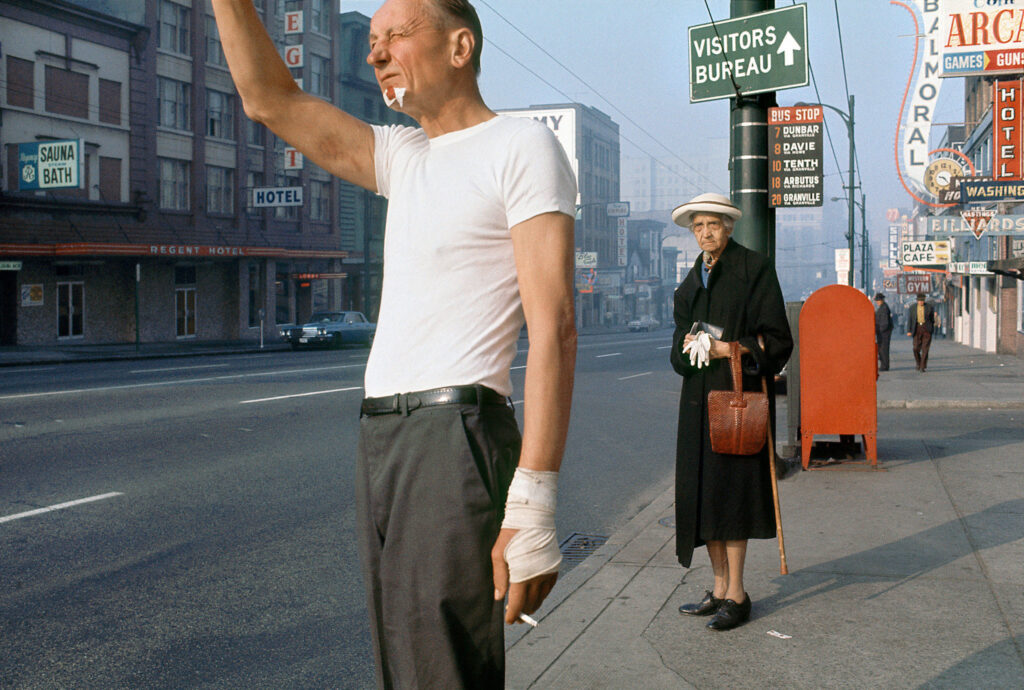The 7-Minute Rule for Street Photographers
The 7-Minute Rule for Street Photographers
Blog Article
Street Photographers Fundamentals Explained
Table of ContentsThe smart Trick of Street Photographers That Nobody is DiscussingThe Best Strategy To Use For Street PhotographersThe 9-Second Trick For Street PhotographersThe Single Strategy To Use For Street PhotographersThe 8-Minute Rule for Street Photographers
A category of digital photography that records everyday life in a public location. The actual publicness of the setting enables the professional photographer to take candid images of unfamiliar people, usually without their expertise. Street professional photographers do not always have a social purpose in mind, however they like to isolate and record moments which could or else go unnoticed (Street Photographers).He was affected by many of those who affected the road photographers of the 1950s and '60s, he was not mainly interested in recording the spirit of the street., who functioned side by side with professional photographers trying to capture the essence of metropolitan life.
As a result of the somewhat primitive modern technology available to him and the lengthy exposure time needed, he battled to capture the hustle and bustle of the Paris roads. He tried out with a series of photo methods, attempting to discover one that would certainly permit him to catch motion without a blur, and he located some success with the calotype, patented in 1841 by William Henry Fox Talbot. While the photographers' subject was basically the same, the outcomes were significantly different, demonstrating the effect of the professional photographer's intent on the personality of the pictures he produced.
Provided the great top quality of his pictures and the breadth of product, engineers and musicians frequently got Atget's prints to utilize as referral for their own work, though business rate of interests were barely his primary motivation. Rather, he was driven to picture every last residue of the Paris he liked.
Not known Incorrect Statements About Street Photographers
They disclose the city with his eyes. His job and essential understanding of photography as an art type worked as inspiration to generations of photographers that complied with. The following generation of street photographers, though they likely did not refer to themselves therefore, was ushered in by the photojournalism of Hungarian-born photographer Andr Kertsz.
Unlike his peers, Brassa used a larger-format Voigtlnder video camera with a longer exposure time, requiring him to be extra calculated and thoughtful in his method than he could have been if using a Leica.
Cartier-Bresson was a champion of the Leica video camera and among the first photographers to optimize its capabilities. The Leica enabled the photographer to engage with the environments and to catch minutes as they took place. Its relatively small size additionally aided the professional photographer fade right into the background, which was Cartier-Bresson's recommended method.
Our Street Photographers Statements
It is because of this fundamental understanding of the art of photo taking that he is typically attributed with finding the tool throughout again roughly a century since its creation. He took pictures for even more than a half century and affected generations of digital photographers to trust their eye and instinct in the minute.
These are the questions I shall attempt to address: And after that I'll leave you with my very own definition of street photography. Yes, we do. Let's kick off with specifying what an interpretation is: According to (Street Photographers) it is: "The act of specifying, or of making something guaranteed, unique, or clear"
No, certainly not. The term is both restricting and misleading. Sounds like a road photography should be pictures of a streets right?! And all road professional photographers, other than for a little number of outright novices, will fully value that a street is not the vital element to street photography, and actually if he said it's an image of a street with possibly a couple of monotonous people not doing anything of rate of interest, that's not street digital photography that's a picture of a road.
What Does Street Photographers Mean?
He makes a valid factor don't you think? Nonetheless, while I concur with him I'm not exactly sure "candid public digital photography" will certainly catch on (although I do kind of like the term "honest photography") because "street digital photography" has been around for a very long time, with lots of masters' names attached to it, so I think additional resources the term is right here to remain.
You can fire at the beach, at a celebration, in a street, in a park, in a piazza, in a cafe, at go to this website a museum or art gallery, in a metro terminal, at an event, on a bridge, under a bridge ...
Yes, I'm afraid we terrified no choice! Without regulations we can not have an interpretation, and without a definition we do not have a genre, and without a style we don't have anything to define what we do, and so we are stuck in a "policies interpretation genre" loophole!
See This Report on Street Photographers

Report this page